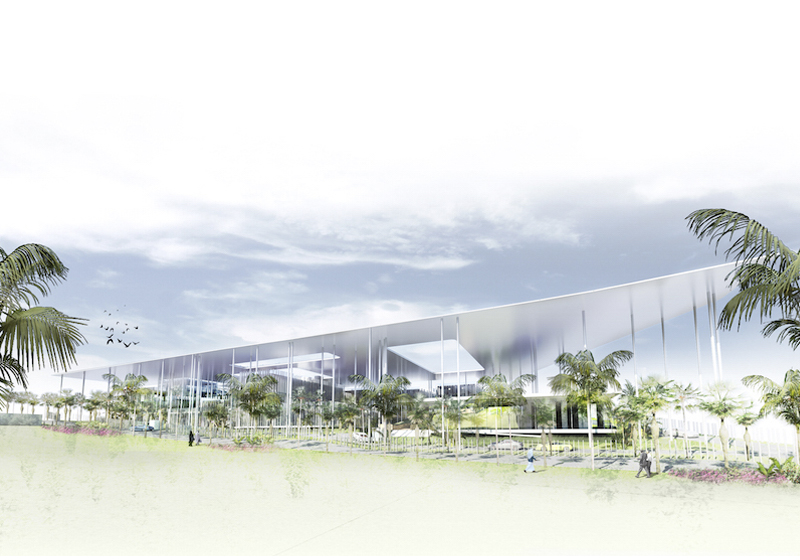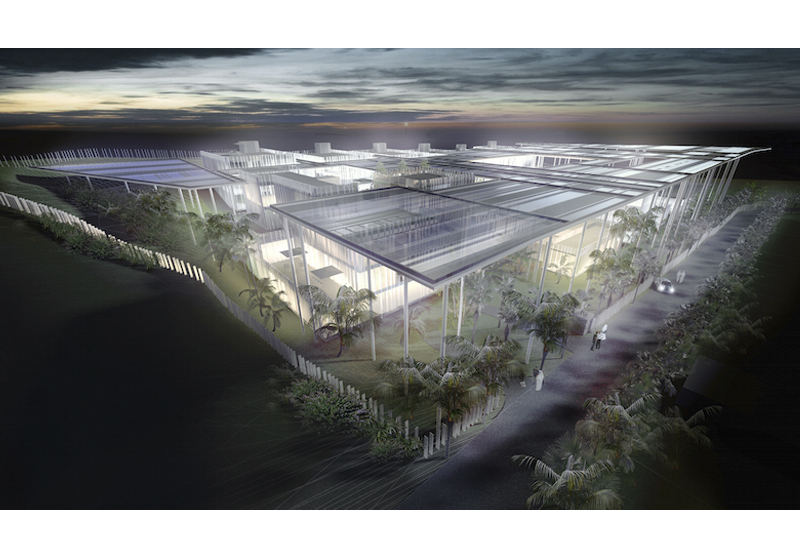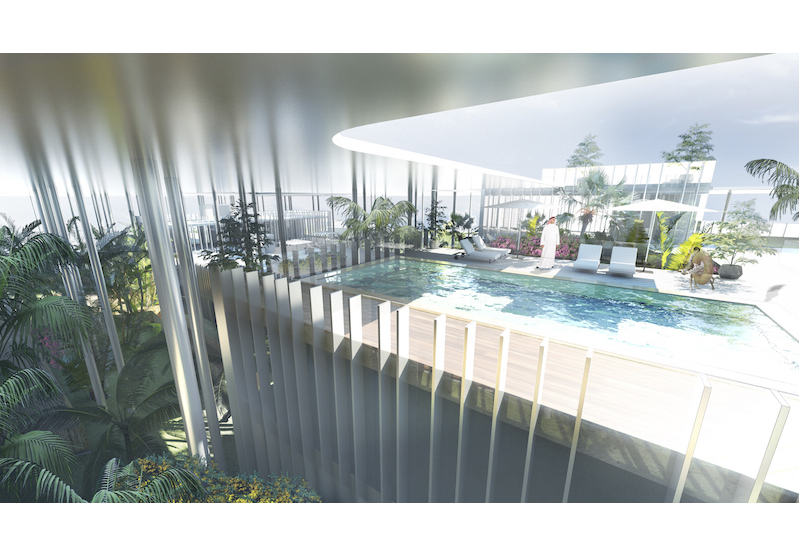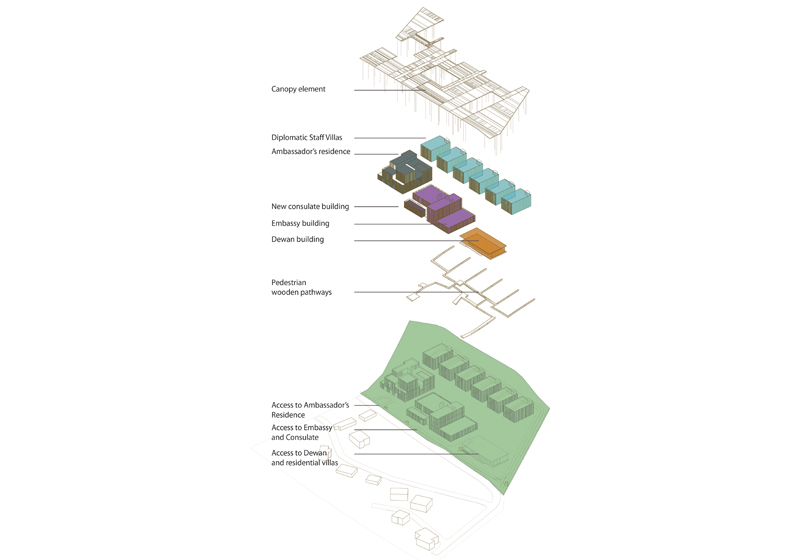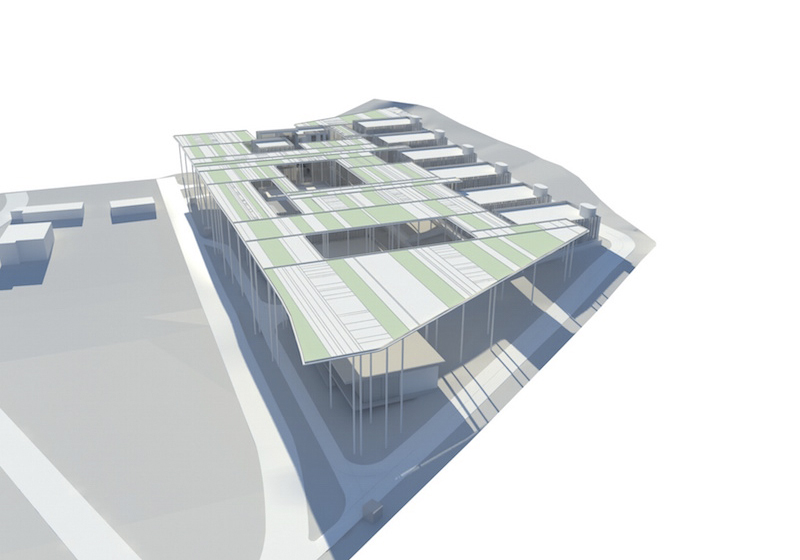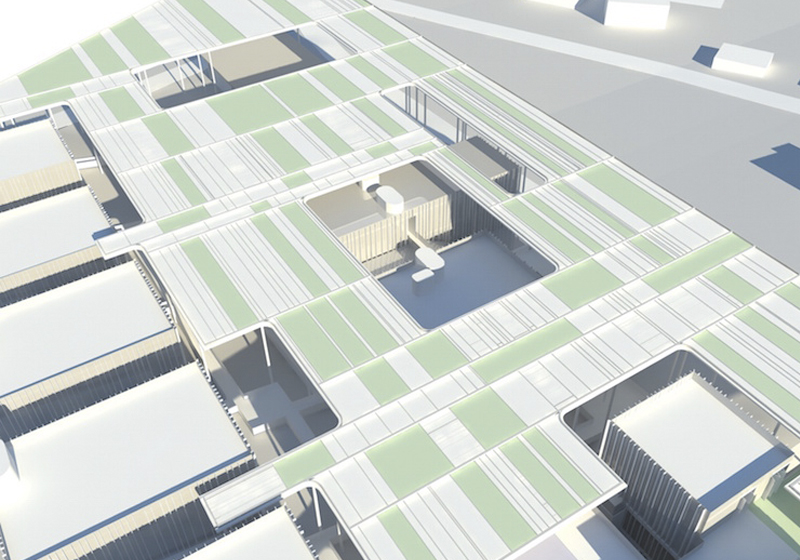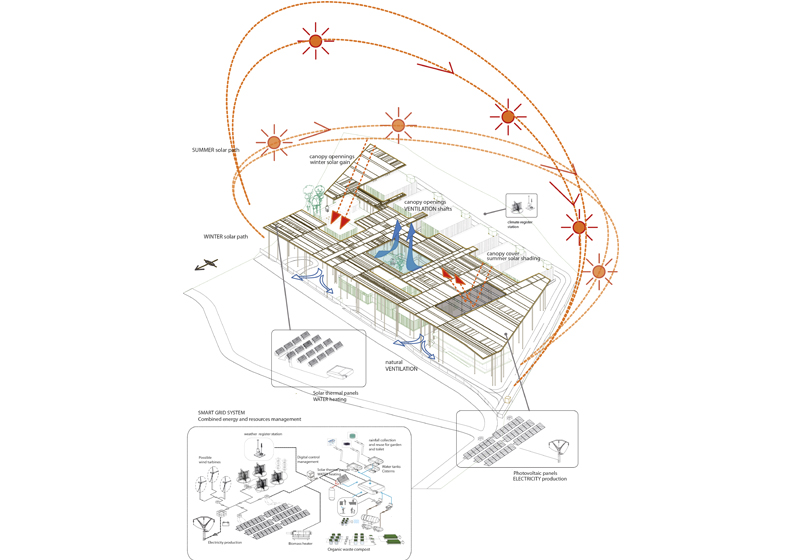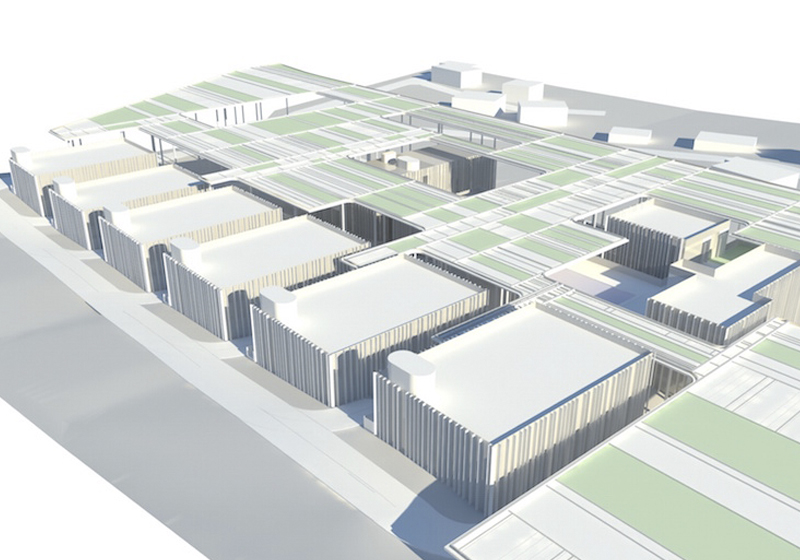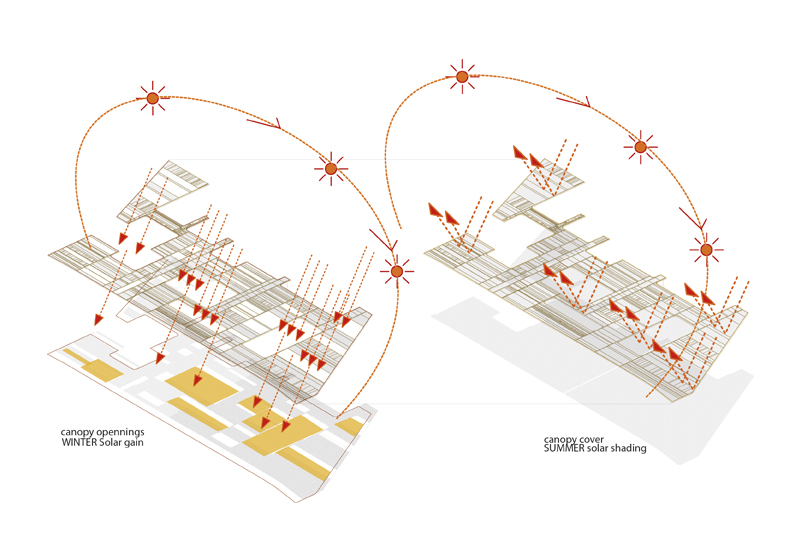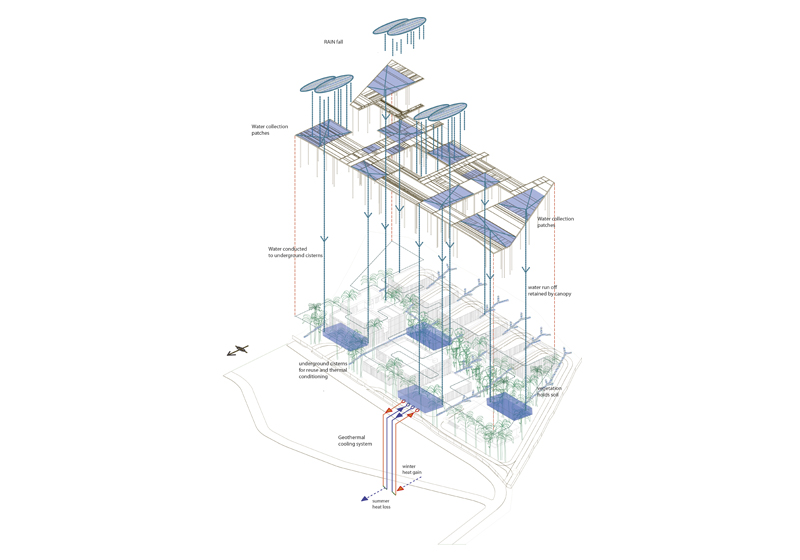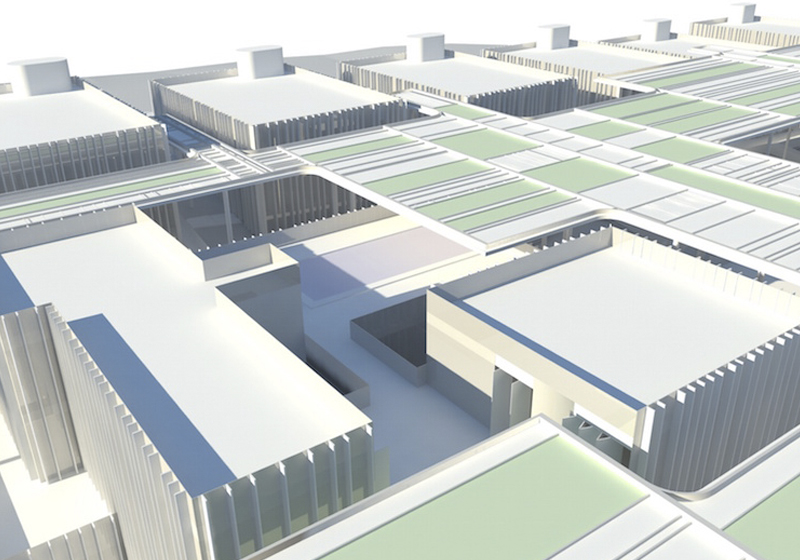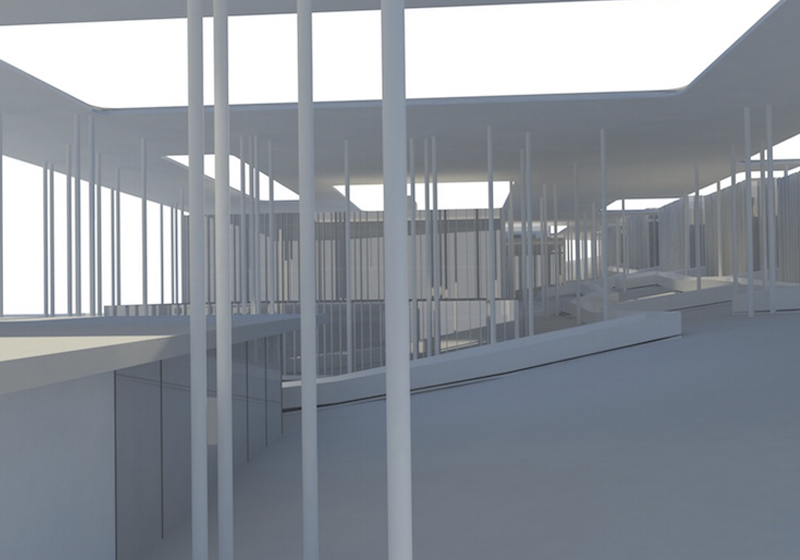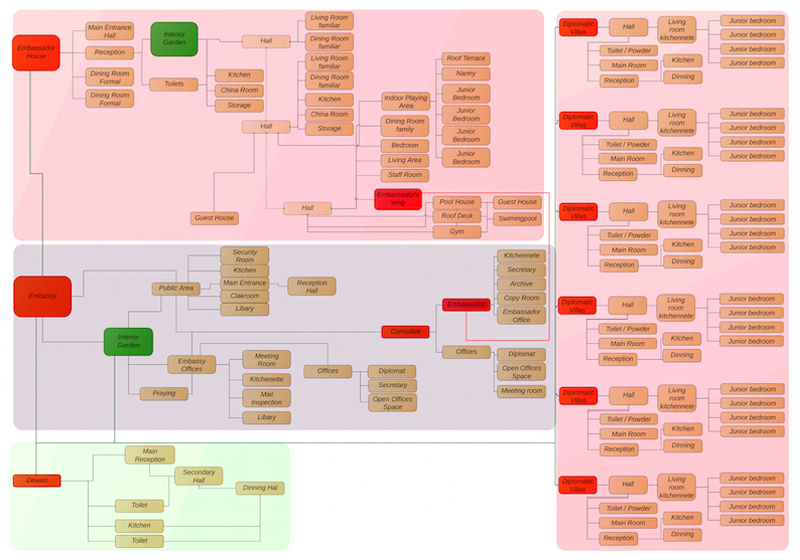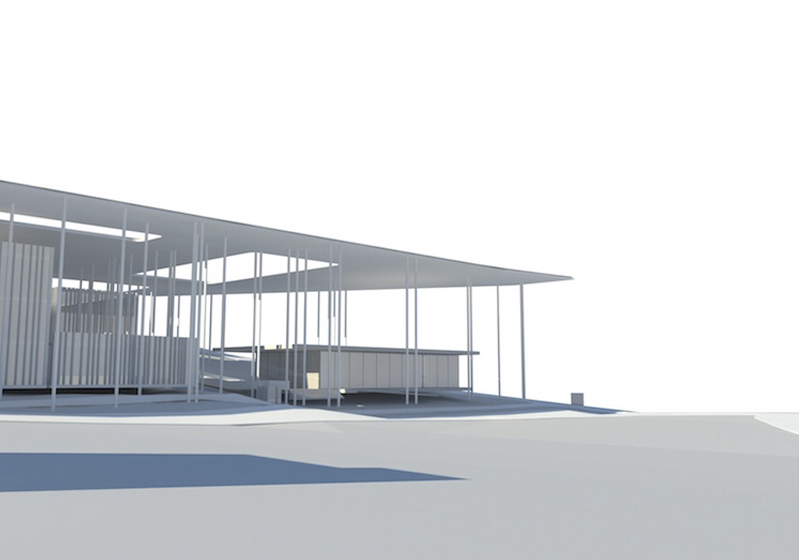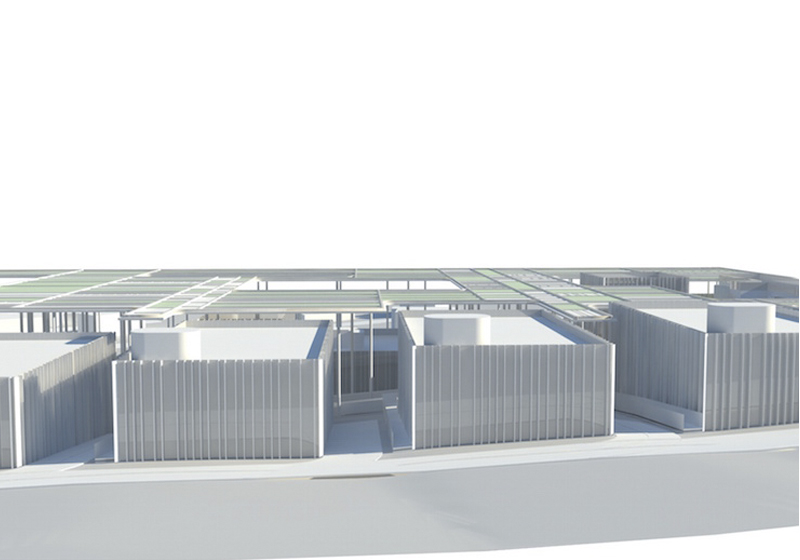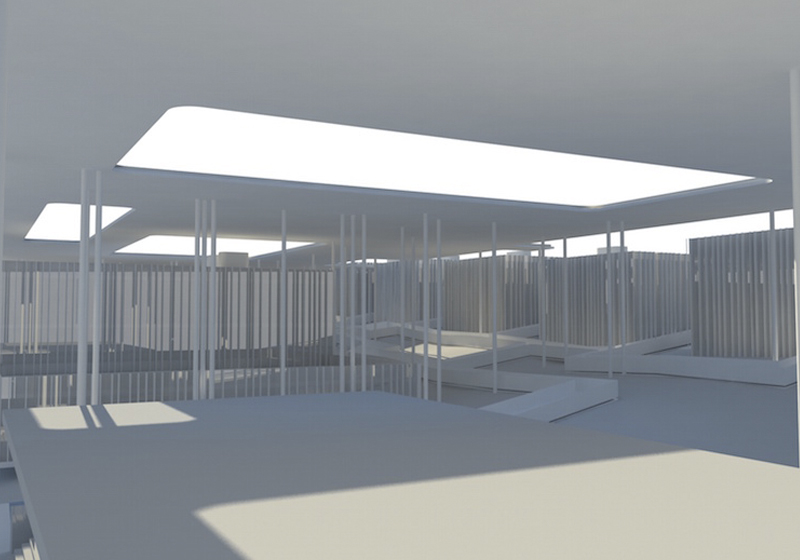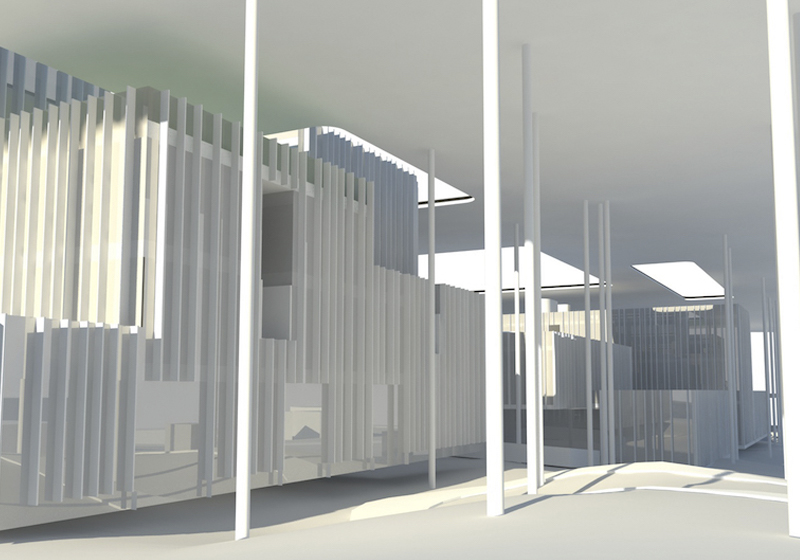We present a secular project inspired in Islamic palaces that comply with the Embassy´s aim to present a distinct and emblematic architectural complex, rooted in architecture´s most relevant tradition.
One of the secular types of Islamic architecture, and essential reference for this Embassy Project, is the Palace, which matches the mosque in reflecting the rich variety of forms, ornamentation, and the sophisticated skills of artisans for the interiors.
Islamic palaces were built as large complexes rather than singular units, generally self-sustaining, and most contained bastion walls, towers, gates, baths, stables, private quarters, public meeting spaces, workshops, offices, hospitals, libraries, pavilions, fountains, and gardens. These palaces were built in the past as the architectural embodiment of the State; the spatial metaphor of government.
Built in idyllic settings with surrounding gardens, were considered earthly paradises.
This is the spirit that we intend to resemble in our scheme.
Therefore, the embassy is a compound of several buildings that climb up a green site with a considerable slope. Linked by paths and vegetation, they constitute a single entity of articulated elements. Public and representation areas occupy the lower part of the site, close to the Street while residential use is located in the upper part, with privileged views over the city. Given the particular needs of this project, we propose an architectural feature that links the buildings: a light canopy gives continuity and meaning to the whole complex. Amongst the main arguments:
• It is a conceptual strong and defining element as it reflects the garden underneath, mirroring the buildings (resembling the water plates in the Nasri architecture of the Alhambra).
• It performs as a climate regulator: as a convertible unit, it provides shade in summer while allows radiation in winter. It also allows to control ventilation.
• It collects and conducts (through vertical pipes) the intense rainfall to underground cisterns. This enables to control the amount of water in the surface of the site as well as minimizing excavation and drainage systems.
• It holds solar panels, and energy generation systems.
• It provides a view screen and coverage for the private roof terraces.
• It provides a security element, disguising the identifiable buildings of the embassy from above. The other architectural feature is the common garden where all the buildings are arranged.
• Gives continuity to the complex at ground level. Floating timber paths provide pedestrian connection between buildings when demanded.
• Has minimum maintenance, as watering is provided and regulated by the upper canopy. Intense vegetation controls earth displacements, confining the slope.
• It provides a permanent view of nature
• Provides a cooling effect (thermal and humidity natural regulation)
• Gives scent of vegetation
• Provides soothing sound of running water. As in the rest of this proposal, luxury and refinement remain in the interiors, while the outside is discreet, restrained, and devoted to few elements.
The exterior of an Islamic building is often left unadorned. In this understanding, enclosure screens (resembling the traditional mashraabiyyat ) are used on the outside to create private space, filter air from the outside, and allow light to enter the building. Only upon entering the building will the inner space be reveal to the visitor. With this particular approach, another essential reference of Islamic architecture to be considered is the domestic.
The typical house built in Islamic societies is oriented inward.
Traditionally complying elements like the dome, the arch, and the vault are here reinterpreted in the interiors.
Each building is self-contained within a common garden and is visually connected to the rest. On the inside the different rooms are arranged to provide a gradient of private spaces of the family. The semiprivate spaces where guests, and not members of the family can enter, are part of the transition that we locate in different floor levels.
The architectural arrangement of each building set a gradient of privacy that guaranties perfect isolation of family areas. Each has a private outdoor garden at the roof level. |
